MARIANI’S
April
22, 2007
NEWSLETTER
Wine Corks at Hunkar
Restaurant, Istanbul
(2006) by Galina
Stepanoff-Dargery
WEBSITE: To
go to my web site, in which I will update food
&
travel information and help link readers to other first-rate travel
& food sites, click on: home page
ARCHIVE: Readers may now access
an
Archive of all past newsletters--each annotated--dating back to July,
2003, by simply clicking on www.johnmariani.com/archive
SUBSCRIBE AND
UN-SUBSCRIBE: You may subscribe anyone you wish
to this newsletter--free of charge--by
clicking here.
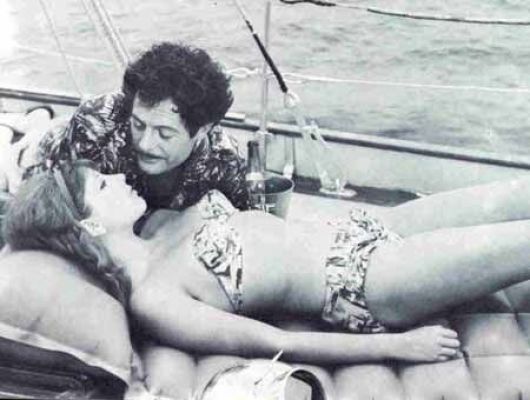
A RARE ANNOUNCEMENT!!!! NEXT WEEK THERE WILL BE NO EDITION OF MARIANI'S VIRTUAL GOURMET NEWSLETTER
BECAUSE MARIANI WILL BE AWAY ON A REAL VACATION!!! NEXT EDITION WILL BE
MAY 6. ARRIVEDERCI!
In
This Issue
NEW YORK CORNER: ANTHOS by John Mariani
NOTES FROM THE WINE CELLAR: Feudo Arancio Makes Quality Sicilia Wines at Great Prices by John Mariani
QUICK BYTES
TRYING TO TRAVEL IN STYLE
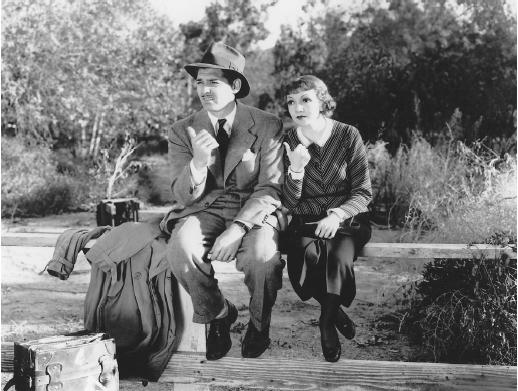
For several years now a friend of mine has never gone on a trip without packing what we calls his "travel suit"--a shiny, ill-fitting bottle-green number he bought years ago in Hong Kong that he says he wears only when he absolutely has to put on a jacket and tie. "It's terrific," he exults. "I can crumple it up, shake it out, wear it and not really care if it gets torn or stolen. It's just a cheap, crappy suit I wear out of necessity."
If that seems like a nifty item to have in your luggage, consider also that he looks like he's working a cheap, crappy suit. In other words, concierges, restaurateurs, and shop owners take one look at that awful green suit of his, wring their hands and say, "Here comes another one."
I am not suggesting that clothes always make the man, nor that the pleasure of travel be encumbered by the kind of wardrobe only George Hamilton would bring for a weekend in
There are certain rules--simple ones that don't take up much room in the luggage--that I think both ease one's passage through gates and lobbies and give an air of sophistication that is always preferable to being regarded as a close cousin of the Simpsons. None of these rules requires extra baggage--they may even require less--nor discomfort, unless you're the type of man who thinks wearing a jacket is somehow more constricting than wearing a windbreaker or jogging suit top.
![]]]]](cgrant.jpg) The guiding principle of traveling in style
is always to look comfortable in one's clothes, not stiffly dressed to
the
nines. "A good style should show no signs of effort," said W.
Somerset Maugham, who also said that "only a cad would wear a brown hat
to town." Which reminds me of a woman I met who once attended
a party
where Cary Grant showed up. After returning home, the woman asked her
husband,
"Did you see how beautifully Cary Grant was dressed?" To which her
husband shrugged and said, "No, what was he wearing?" Her reply:
"Oh, I don't know what he was wearing."
The guiding principle of traveling in style
is always to look comfortable in one's clothes, not stiffly dressed to
the
nines. "A good style should show no signs of effort," said W.
Somerset Maugham, who also said that "only a cad would wear a brown hat
to town." Which reminds me of a woman I met who once attended
a party
where Cary Grant showed up. After returning home, the woman asked her
husband,
"Did you see how beautifully Cary Grant was dressed?" To which her
husband shrugged and said, "No, what was he wearing?" Her reply:
"Oh, I don't know what he was wearing."So, here are a few do's and don'ts of traveling in style that I think are completely reasonable, usually rewarding, and don't cause chafing.
THE LAND'S END SYNDROME
One of the chronic mistakes Americans abroad make is to dress in a style that suggests everything was purchased from a mail order catalog. Tennis shirts the color of strawberry sherbet, a blue poplin blazer with welted seams and white buttons, uncuffed chinos and brand new sneakers, that sort of thing. Such
 an ensemble is perfectly adequate on
vacation in
an ensemble is perfectly adequate on
vacation in I've nothing against chinos (I own a pair or two) or blue blazers (which I also own two of), but it has become the American traveler's uniform and gets an appropriate response. It's fine--as are shorts in hot weather climates and anoraks in wet--but wearing such an outfit to a fine restaurant in
CULTIVATING CASUAL CHIC
The whole world has become more casual in its dress, but that doesn't mean slovenly. Ninety-nine-point-nine percent of the finest restaurants in
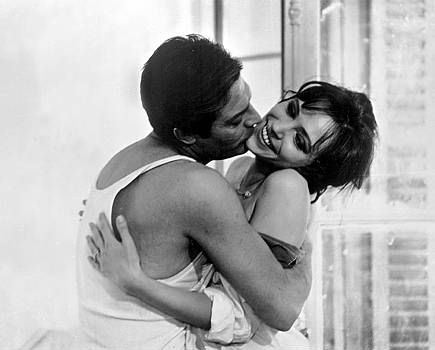 you'll
know what I mean. They fold into luggage beautifully, do not wrinkle
easily,
and fall gracefully when you put them on. Linen, once said to wrinkle
with
panache, looks horrible after a single afternoon, making most men look
like
a Colombian drug dealer. Women, I might
add, have always known these things to be true, and while they may pack
too
much, they pack the right things.
you'll
know what I mean. They fold into luggage beautifully, do not wrinkle
easily,
and fall gracefully when you put them on. Linen, once said to wrinkle
with
panache, looks horrible after a single afternoon, making most men look
like
a Colombian drug dealer. Women, I might
add, have always known these things to be true, and while they may pack
too
much, they pack the right things.So, too, Italian or Spanish loafers are supple, while English laced shoes are more comfortable after a long day on your feet. Nikes and Reeboks are fine for traipsing through the ruins of
By the same token, it is useless to object to restaurant policies that insist upon a jacket and tie and pure folly to arrive in expensive, casual duds and expect to be seated anyway. Most restaurants that require a jacket courteously have on hand several discreet jackets in a range of sizes. Others try to punish your indiscretion by giving you something embarrassing to wear. While dining at the Savoy Hotel in
007 KNOWS BEST
If you've ever read any of Ian Fleming's James Bond books, you will see that super-suave super spy 007
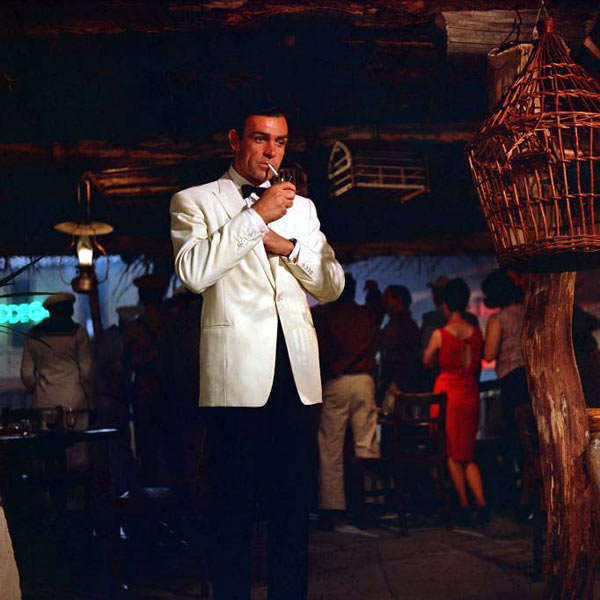 is
anything but
the fop he became in the Roger Moore films. Bond, by the very
nature of
his assignments (forty-eight hours to find and defuse an atomic bomb in
choppy
waters off
is
anything but
the fop he became in the Roger Moore films. Bond, by the very
nature of
his assignments (forty-eight hours to find and defuse an atomic bomb in
choppy
waters off A blue suit is essential to traveling in style. It is never out of place, dressy enough for more formal occasions and always correct in business meetings. Medium to dark gray is fine too, but tan, khaki, green, and brown get boring--both for the wearer and the onlooker.
A well-made lightweight wool blue blazer--without welted seams--will always be welcome just about anywhere and at any time, with or without a tie, but with gray flannel slacks, not chinos. The former makes you look like a gentleman; the latter like a member of a college glee club.
A PROPER COLLAR
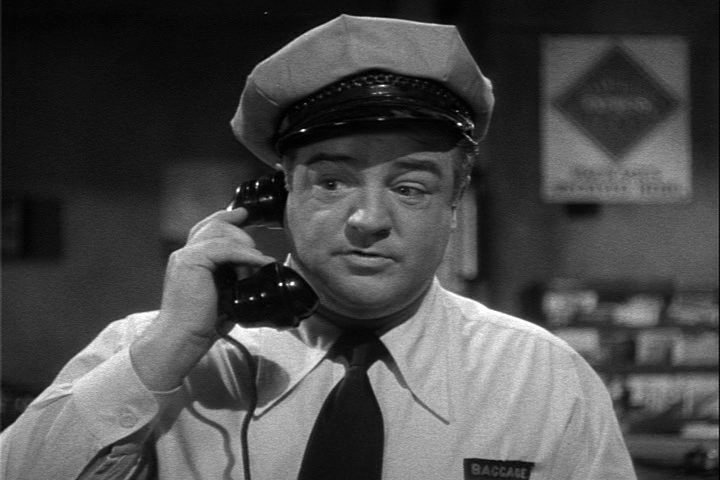 A man can get by in most echelons of society
in a well-fitting, moderately-priced suit. But nothing can disguise a
cheap
shirt. If there is one item of clothing that betrays a loser's style,
it's a
shirt with a collar that doesn't sit correctly around the neck, a sheer
fabric
of a kind that makes you look like an insurance claim adjuster on the
job, and
cuffs and seams that pucker after two trips to the cleaners. Clothes may not make the man, but bad shirts mark the man, and an
investment in good, all-cotton shirts--and you can
get
excellent quality starting at about $60--is the best one a traveler can
make if
he wants to make an effortless impression. Bring a variety--a couple of
button
downs, a straight or spread collar, perhaps a tab. Skip pin-collar
shirts. French cuffs are
beautiful, but
they take extra thought, and you can't afford to lose a cuff link. And
take
enough shirts for a week: You're unlikely to have them sent out to a
cleaner,
which would cost a fortune anyway.
A man can get by in most echelons of society
in a well-fitting, moderately-priced suit. But nothing can disguise a
cheap
shirt. If there is one item of clothing that betrays a loser's style,
it's a
shirt with a collar that doesn't sit correctly around the neck, a sheer
fabric
of a kind that makes you look like an insurance claim adjuster on the
job, and
cuffs and seams that pucker after two trips to the cleaners. Clothes may not make the man, but bad shirts mark the man, and an
investment in good, all-cotton shirts--and you can
get
excellent quality starting at about $60--is the best one a traveler can
make if
he wants to make an effortless impression. Bring a variety--a couple of
button
downs, a straight or spread collar, perhaps a tab. Skip pin-collar
shirts. French cuffs are
beautiful, but
they take extra thought, and you can't afford to lose a cuff link. And
take
enough shirts for a week: You're unlikely to have them sent out to a
cleaner,
which would cost a fortune anyway.Also, while this may seem obvious, dress shirts should have collars. But these days, many of the high fashion shirts don't, giving the wearer that ineffable dentist or barber look. Save such collarless fashions for Oscar night
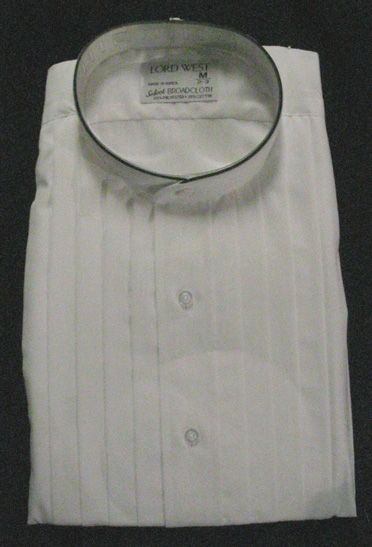 in
in ONE GOOD BAG
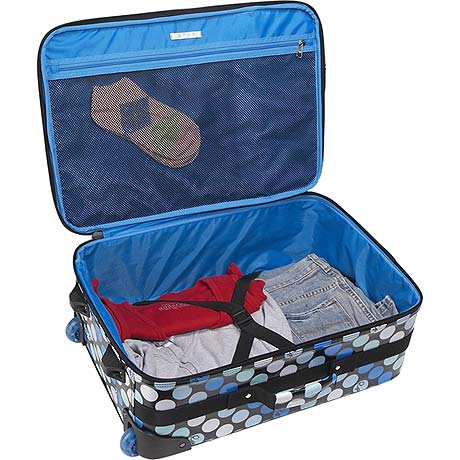
I am adamantly against buying exorbitantly priced leather luggage or anything with little, intertwined L's and V's on brown vinyl, unless I wanted them banged around by the baggage handler terrorists. Good, sturdy luggage with good locks is a necessity. Suiters, rarely handsome, are the best way to avoid losing your luggage, of course. But buy a good carry-on bag: You might think your old Carnival Airlines bag from your cut-rate trip to
UPGRADE ONE-UPMANSHIP
I'm old enough to remember the days when people driving their friends and relatives to an airport or picking them up at one would really dress up for the occasion. Now, even in first-class, you'd be lucky not to be sitting next to a tattooed doofus in a sleeveless t-shirt and baseball cap or a jacket reading "GO BULLS!" across the back. (Ever try to pack one of those heavy, satin sports jackets? Fuh-ged-aboud-it!)
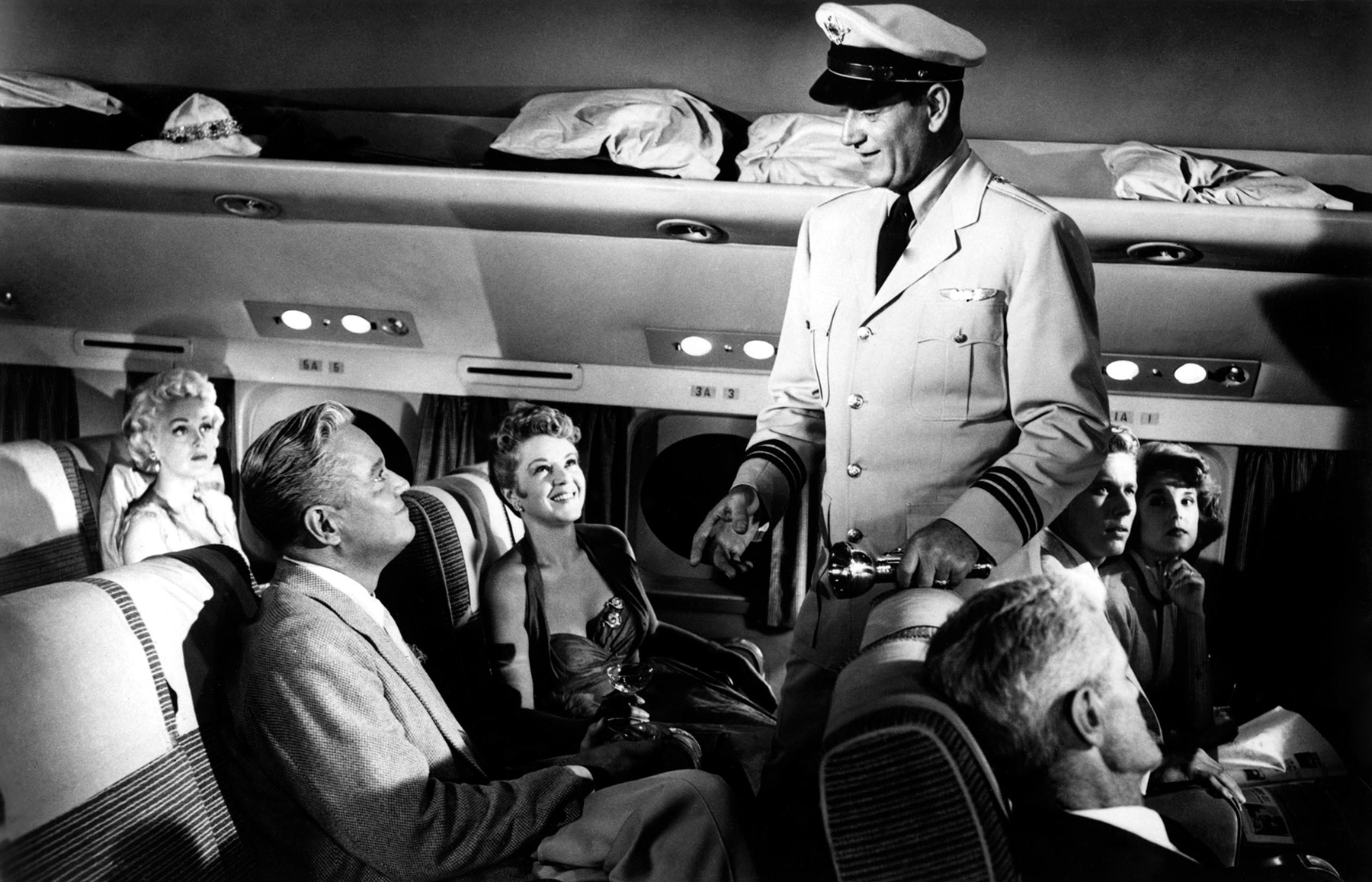 Not too long ago the airlines themselves
requested jackets and ties for gentlemen in first class, then
"appropriate
dress." Few pay much attention any more, but I have found that showing
up
at the counter in a jacket and, preferably, a tie can work wonders with
the
gate and flight attendants in getting you a bit of preferential
treatment,
whether it's in a better choice of seating, a little lagniappe with
cocktails
or food, even an upgrade. On a recent occasion I showed up in jacket
and tie
for my coach seat, only to upgraded to business by a
gate
attendant who was in a particularly good mood, had the room, and
thought
she'd
do me a favor. Couldn't hurt.
Not too long ago the airlines themselves
requested jackets and ties for gentlemen in first class, then
"appropriate
dress." Few pay much attention any more, but I have found that showing
up
at the counter in a jacket and, preferably, a tie can work wonders with
the
gate and flight attendants in getting you a bit of preferential
treatment,
whether it's in a better choice of seating, a little lagniappe with
cocktails
or food, even an upgrade. On a recent occasion I showed up in jacket
and tie
for my coach seat, only to upgraded to business by a
gate
attendant who was in a particularly good mood, had the room, and
thought
she'd
do me a favor. Couldn't hurt.THROW THEM IN JUST IN CASE
I always carry a few items that don't take up much more space than if I didn't, and they can sometimes make for a more elegant appearance and acceptance at my destination. Pocket squares and neckties in two or three colors to add variety to a basic wardrobe. White cotton handkerchiefs. One cotton turtleneck to be worn under a jacket.
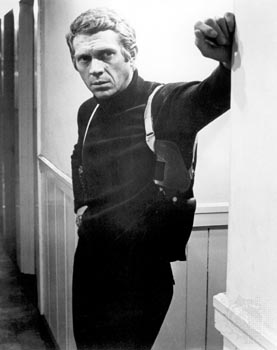 A lightweight cotton
raincoat--never one
of those hideous plastic things that fold into a pouch or a poncho that
makes
you look like a tour guide in
A lightweight cotton
raincoat--never one
of those hideous plastic things that fold into a pouch or a poncho that
makes
you look like a tour guide in JUST ONE MORE
I try never to check my bags, but if I do, I never put anything in there I can't afford to do without. I make the reasonable assumption that anything of value will be summarily stolen. I do try to bring one extra suit of clothes in case they lose the bag, or get spilled or splashed upon. It creates a little more bulk in the baggage, but it's worth it for peace of mind.
ONE NIGHT STANDS
But the key element to traveling in style is always to remember that you are probably not going to see the same people more than once or twice on your trip. That means you need not take more than two outfits and a few accessories, because no one is going to see you in them again. I once drove back and forth across the
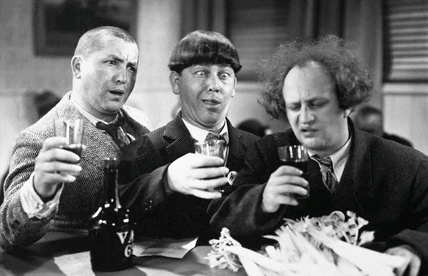
As I said up front, traveling with a certain elegance can be as comfortable as traveling in bad taste. For those who couldn't care less, go right ahead. But don't blame me if a maître d' in a posh restaurant leans over to say, "Are you dining with us today, sir, or are you here to check the gas meter?"
DRESSING FOR DINNER TIMELINE
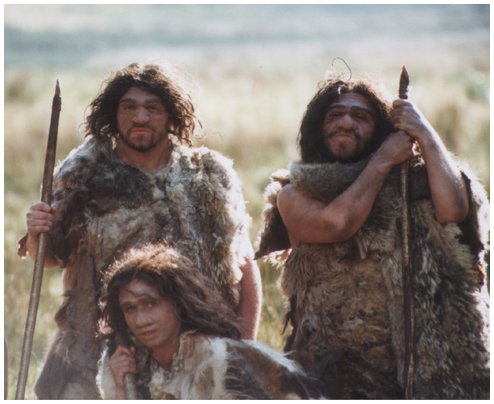
1 Million B.C.
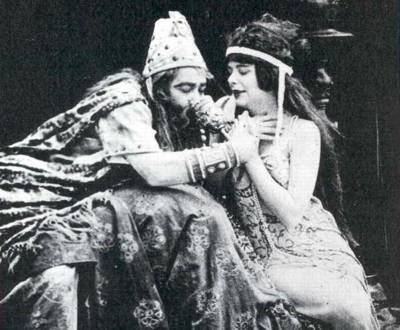
500 B.C.
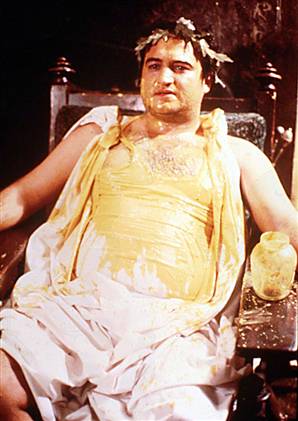
50 A.D.
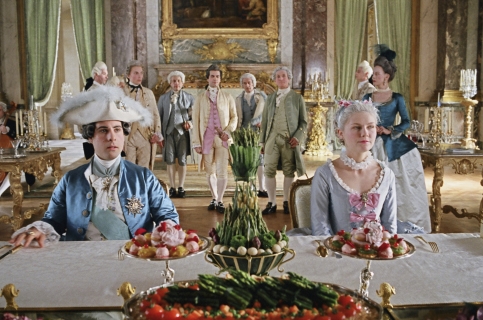
1789
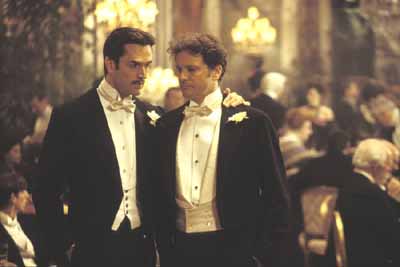
1898
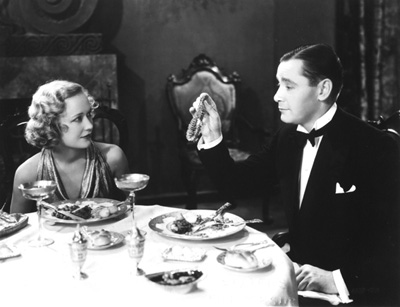
1935
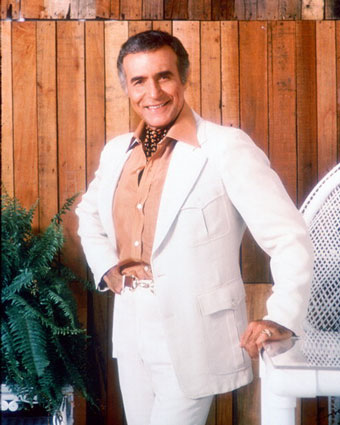
1975
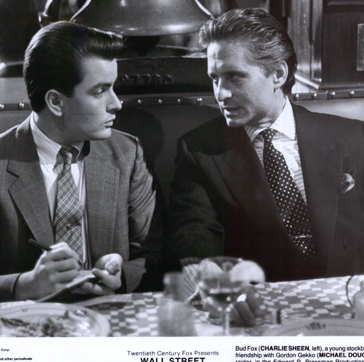
1988
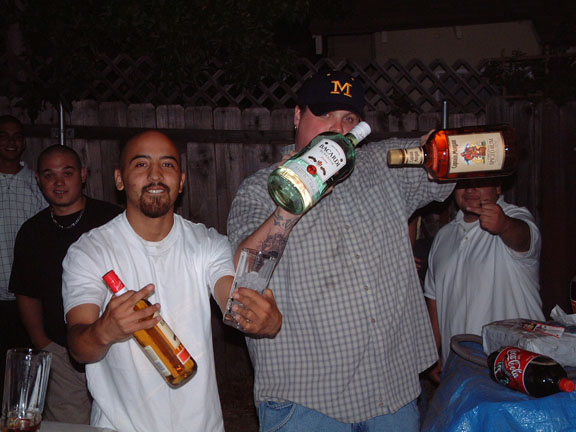 2007
2007NEW YORK CORNER
by John Mariani
Anthos
36 West 52nd Street
212-582-6900
Arpaia, whose first restaurant was Bellini, partnered with Chef David Burke three years ago to open burke & donatella on
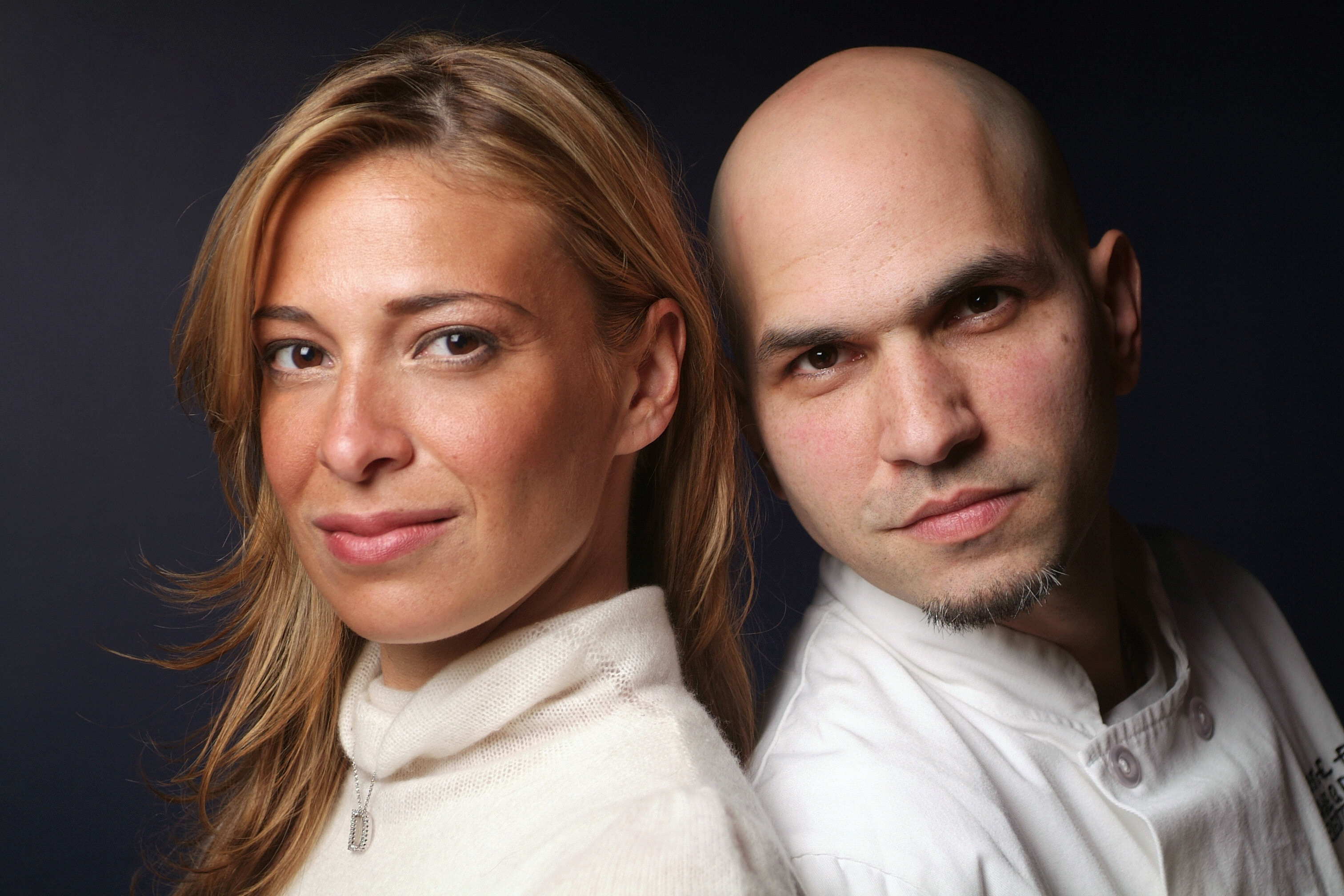
Joining Arpaia at Dona, Psilakis featured what he called "First Generation Cuisine," combining modern ideas on Italian and Mediterranean food, with a good deal of raw seafood items and mezes appetizers. At Anthos he is toeing much the same line, refining further those elements he innovated at Dona.
The new space, formerly occupied by an Italian seafood restaurant named Aquapazza run by Arpaia's brother Dino, is far more beautiful than Dona, basically a long, sleek, glowingly lighted 95-seat room with pleasant bar-lounge upfront and a staircase leading to private dining rooms. White tablecloths, good glassware and silver, and a conversational decibel level make this one of the west side's most congenial and civilized new dining venues, and, though not required, most of the men at dinner wear jackets and ties. The 215-label winelist, with a slew of good modern Greek wines, has a decent price range starting at $35, and a good sommelier, mark Du Mez.
So far--at less than two months old--the staff at Anthos is not quite up to the food or wine here. They seem overwhelmed by early success, and the bar is confused by even the simplest cocktail order. I trust this aspect of Anthos will only improve once they all get in synch.
Psilakis's food is wholly in its groove, though. For while he is extremely proud of his Greek heritage and wholly knowledgeable about old country culinary traditions, he has brought them into the new century with panache, from the mezes straight through to desserts. The
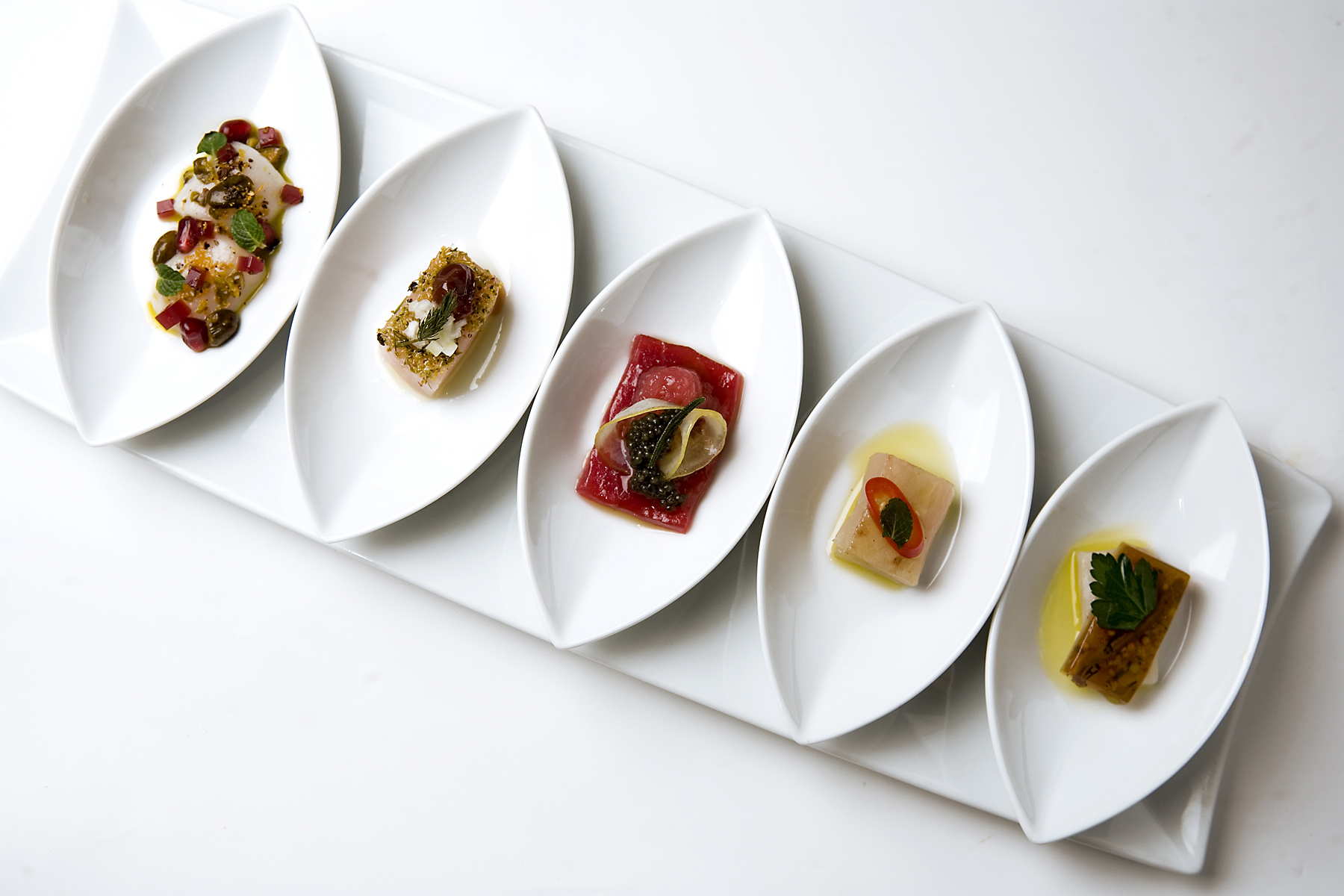 The amazements kept coming: Tasmanian
crab was flavored with a sea urchin tzatziki of
trout roe with chives; large Japanese botan ebi
prawns were moistened by a tomato
consommé with
crumbled feta and spicy basil
The amazements kept coming: Tasmanian
crab was flavored with a sea urchin tzatziki of
trout roe with chives; large Japanese botan ebi
prawns were moistened by a tomato
consommé with
crumbled feta and spicy basilOur main courses were somewhat simpler and heartier, as they should be. We began with
Beautifully composed desserts by Bill Corbett included a trio of baklavas--for once not overly sweet!--pistachio, honey custard, and walnut cake with cinnamon ice cream; yogurt with spoon fruit and the unexpected flavors of olives, with a mint gelée and crushed mastic kourambiedes shortbread cookies; a rose and white chocolate crema with passion fruit purée and almond crumble; and goat's cheesecake with Pink Lady apples, goat's milk caramel, and wispy, crisp kataifi pastry.
The menu at Anthos is just the right size to allow Psilakis and his team to bring everything off with finesse, despite the number or exotic ingredients used. It is to their credit that none comes across as gimmicky, nothing that might be called "experimental." Everything works here on the principle of good flavors and impeccable ingredients combined in very precise ways to make something that is wonderfully new rather than tellingly novel.
NOTES FROM THE WINE CELLAR
Feudo Arancio Makes Quality Sicilia Wines at Great Prices
by John Mariani
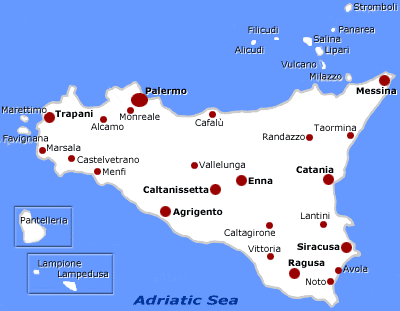 Lucio
Matricardi is not a winemaker to
mince words. Indeed, when discussing his or others’ bottlings he
refuses to
indulge in the usual Winespeak that makes wines sound more like fruit
salad and
chem lab experiments than fermented grape juice. “This
is a `Jimmy wine,’” he says of an over-extracted
Lucio
Matricardi is not a winemaker to
mince words. Indeed, when discussing his or others’ bottlings he
refuses to
indulge in the usual Winespeak that makes wines sound more like fruit
salad and
chem lab experiments than fermented grape juice. “This
is a `Jimmy wine,’” he says of an over-extracted
Matricardi, 38, (below) of the Feudo Arancio
estates located in Sambuca di Sicilia, in the province of Agrigento, is
a
high-energy Italian winemaker who is trying to propel Sicilian
vineyards into
the 21st century by using distinctive, regional grapes to make wines
that taste as if they should sell for $25-$50, but instead cost under
$10. “I
want to make young, happy wines,” he said over dinner at 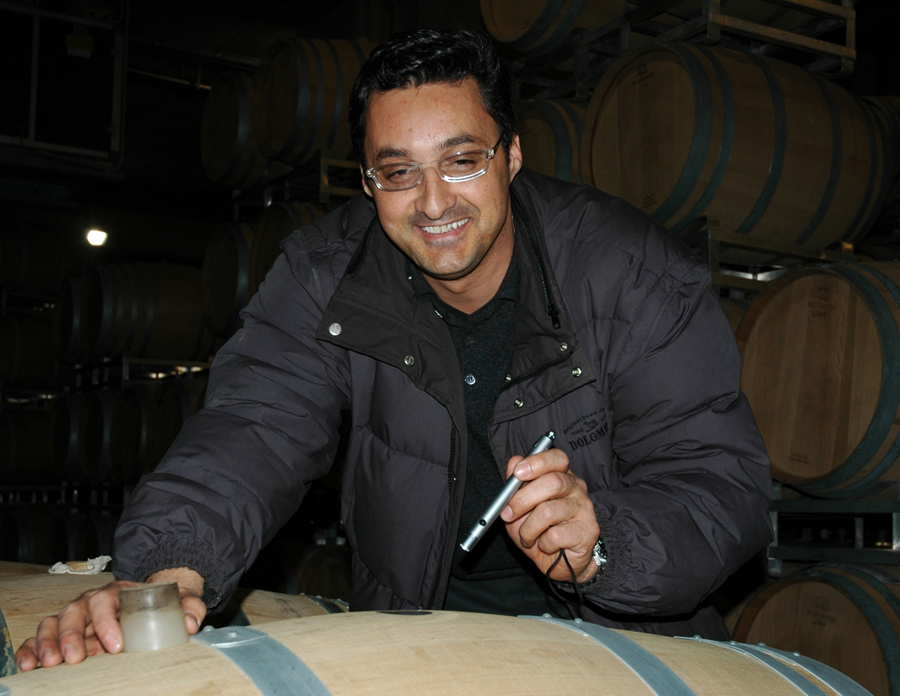
If this seems like an elementary
concept
of modern viniculture, it is a fairly novel one in
Last
year for this column I did a tasting
of two dozen expensive Sicilian wines that revealed little of real
quality,
with several of them oxidized. It is this reality that Matricardi and
his
associate, winemaker Calogero Statella, have been trying to change at
Feudo
Arancio, a 2,200 acre estate owned by Gruppo Mezzacorona, a group of
1,500
growers whose headquarters is in the north, in
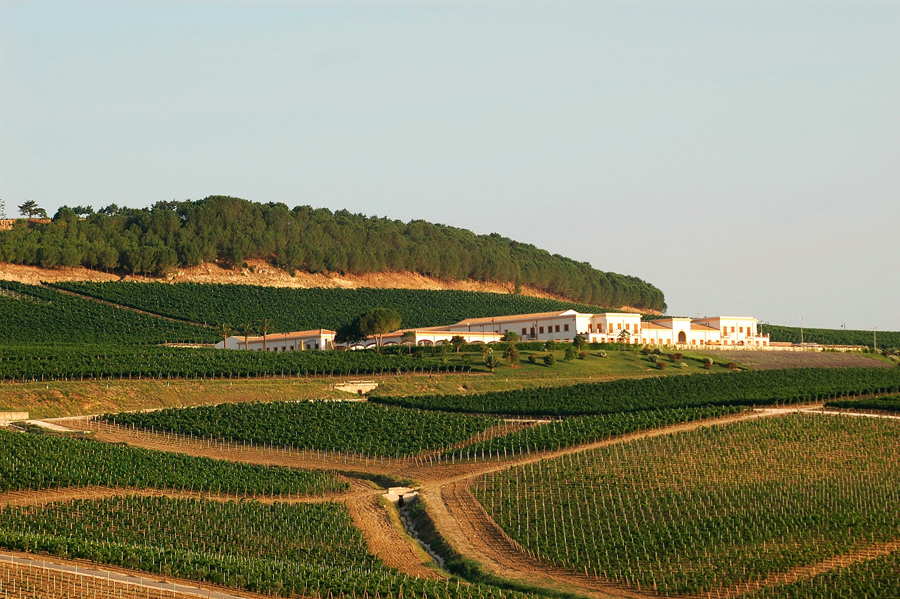 Feudo Arancio (below) produces a range of wines
under $10 including non-indigenous chardonnay, merlot, syrah, and
cabernet
sauvignon, which Matricardi admits are made just for the international
market.
I found them competently made, clean, and certainly good buys. But I was more intrigued and certainly more
delighted by the native Sicilian varietals, the white grillo and the
red nero
d’avola, both $7.99.
Feudo Arancio (below) produces a range of wines
under $10 including non-indigenous chardonnay, merlot, syrah, and
cabernet
sauvignon, which Matricardi admits are made just for the international
market.
I found them competently made, clean, and certainly good buys. But I was more intrigued and certainly more
delighted by the native Sicilian varietals, the white grillo and the
red nero
d’avola, both $7.99.
“Grillo is a grape we
can trace back
2,500 years,” says Matricardi, who was born in Abruzzo and received his
Ph.D. in enology in Bologna, in cooperation with the University of
California
at Davis. “It is one of the grapes that go into Marsala, where it
always
oxidizes. But it is a fine white varietal, with a simplicity that
whispers and
a wonderful flavor and aroma of summer’s white peaches.”
I
found the Grillo 2005 (right) enormously
charming, very refreshing, not particularly complex, but ideal for
appetizers
and just about any seafood I can think of. It is only faintly greenish
yellow,
and very crisp, despite 13.5 percent alcohol.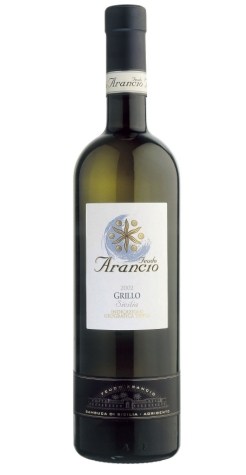
The Nero d’avola,
which is also known as calabrese,
is Sicily’s most prodigious grape, planted in about 35,000 acres. Only
now are
winemakers beginning to regard it as perhaps the most promising
Sicilian
varietal for single estates. “There is
so much nero d’avola that it is used in too many blends,” says
Matricardi. “But
if you use less than 15 percent of a grape in a blend, you’re going to
lose the
typical regional character. That’s why
we treat the grape with respect, including night harvesting when it’s
cooler.”
As a result, Feudo
Arancio’s Nero d’avola
2004 has a minimum alcohol level 13.5 percent—on the low side for any
Mediterranean red--because Matricardi protect the vines and grapes from
too
much of the scorching Sicilian sun.
It is definitely not in danger of
oxidation, having spent 12 months in new French oak barrels, and it has
an
impressive complexity of flavors—dried black cherry and blueberries,
with hints
of anise, ideal with tomato-and-garlic rich pastas, saffron-scented
risottos,
and both poultry and red meats.
But there I go writing
Winespeak. Lucio
Matricardi took a sip of the wine, let his eyelids droop, and sighed,
“You
taste this wine and it is like walking through the vineyards at
twilight at
harvest time."
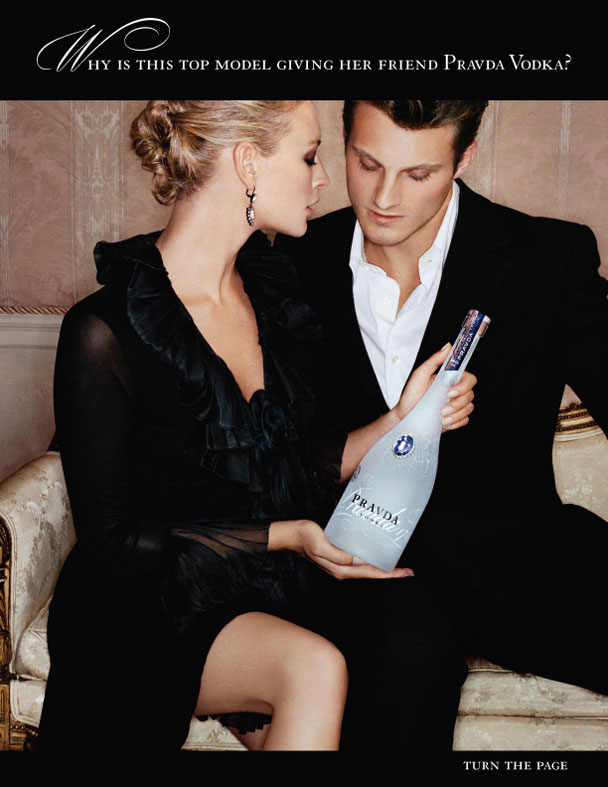
HINT: IT AIN'T ABOUT
THE VODKA
MAYBE IT'S JUST. . . YOU !

"Dining in [
QUICK BYTES
Everett Potter's Travel Report:
~~~~~~~~~~~~~~~~~~~~~~~~~~~~~~~~~~~~~~~~~~~~~~~~~~~~~~~~~~~~~~~~~~~~~~~~~
MARIANI'S VIRTUAL GOURMET NEWSLETTER is published weekly. Editor/Publisher:
John Mariani. Contributing Writers: Robert Mariani, Naomi
Kooker, Kirsten Skogerson, Edward Brivio, Mort
Hochstein, Suzanne Wright. Contributing
Photographers: Galina Stepanoff-Dargery, Bobby Pirillo. Technical
Advisor: Gerry McLoughlin.
Any of John Mariani's books below
may be ordered from amazon.com by clicking on the cover image.
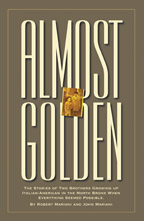 My
newest book, written with my brother Robert Mariani, is a memoir of our
years growing up in the My
newest book, written with my brother Robert Mariani, is a memoir of our
years growing up in the For those of you who don't think of the Robert and I think you'll enjoy this very personal look at our --John Mariani |
 |
 |
 |
 |
 |
 |
copyright John Mariani 2007

